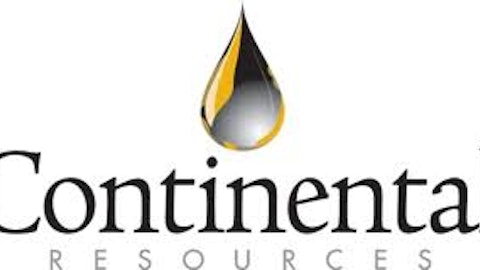The worldwide oil and gas exploration and production industry is expected to grow by 3% this year to $4.5 trillion. According to the Energy Information Administration, global demand for oil will grow by 0.9 million barrels per day this year and 1.2 million barrels per day in 2014. To meet this increasing demand, companies in the industry are adopting new technology to increase their production, mainly by investing in the ability to extract oil and gas from unconventional geographical formations called shale.
Here are three companies in the industry that have sustainable opportunities in the upcoming years to enhance production with their resources. These companies are adopting different strategies like improvement in infrastructure and increasing drilling activities to pace up their production.
Central compressor and new rig

This expansion will help in expanding gross capacity to approximately 2 billion cubic feet per day, or Bcf/d, this year and 2.9 Bcf/d next year compared to a current capacity of 1.4 Bcf/d. This will help the company generate higher revenue in the future.
The company currently operates five rigs, and is planning to bring a sixth rig in the Marcellus Shale by the end of the year. This additional rig will help in increasing the company’s well-drilling capacity. With this rig, Cabot Oil & Gas Corporation (NYSE:COG)’s wells drilled per year will increase from around 85 to approximately 100. This will foster a 20% improvement in well recovery compared to 14 billion cubic feet equivalent, or Bcfe, of proved reserves last year. The company can expect to increase production of around 349,000 Mcfe/d in the Marcellus region. With this, the total production will rise to 1,079,715 Mcfe/d from 732,279 Mcfe/d in the last year.
MLP and strong growth in Permian Basin
On June 6, Devon Energy Corp (NYSE:DVN) announced a plan to form a master limited partnership, or MLP, for its midstream assets in the U.S. An MLP is a limited partnership that is publicly traded on a security exchange. This partnership combines the tax benefits of limited partnership with the liquidity of publicly traded securities.
The newly public traded company will own a minority interest in the company’s natural gas gathering and processing assets in Oklahoma, Texas and Wyoming. Devon Energy Corp (NYSE:DVN) will retain distribution rights and hold a majority of partnership units.
It is expected that Devon Energy Corp (NYSE:DVN)’s MLP will file registration with the SEC in the third quarter of 2013. Devon will initially sell 10% of its units following its IPO, which will bring $450 million in cash that can be used in its continuing operation in the Permian Basin and the Mississippian.
The MLP is the first move in restructuring; the company has another restructuring option in the sale of its Canadian assets. These assets are valued around $6 billion – $8 billion. The company can go for a partial or outright sales of these assets. The cash generated from either of these restructuring plans would be used in a buyback to increase investors’ confidence. A share buyback of $2 billion – $3 billion is possible in the near to medium term.
The company delivered strong oil production growth in the first quarter, driven by gains from the Permian Basin. The output in this region increased 24% quarter-over-quarter, representing 60% of the company’s 68000 Boe/d oil production. Currently, there are 29 rigs in the Permian region, and the company is planning to spend $1.5 billion. It is expected that the company will drill around 300 wells this year. With the increasing wells in this region, its U.S oil production will increase by 40% year over year in 2013.
Production growth in the Scoop region and pad drilling in the Bakken region
Continental Resources, Inc. (NYSE:CLR) is the largest acreage holder in the Bakken region, and is working continuously to make improvement by developing its drilling method. It is adopting pad drilling, which allows the drilling of multiple wells more efficiently, as it reduces the time taken to move from rigs to well locations.




